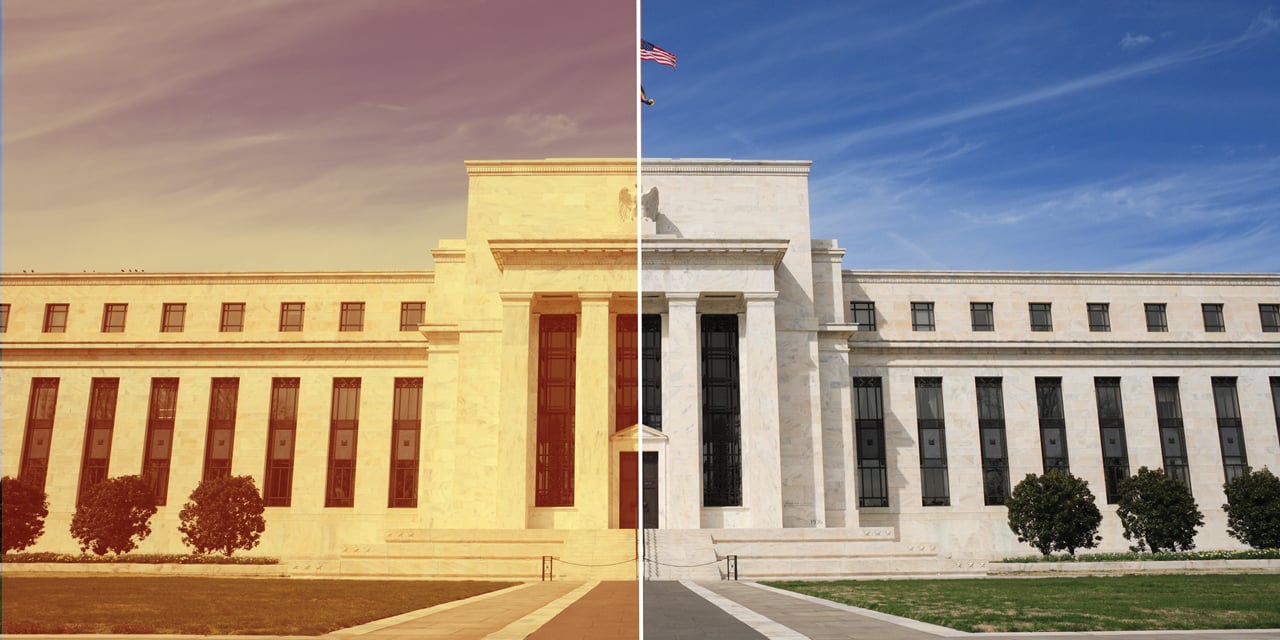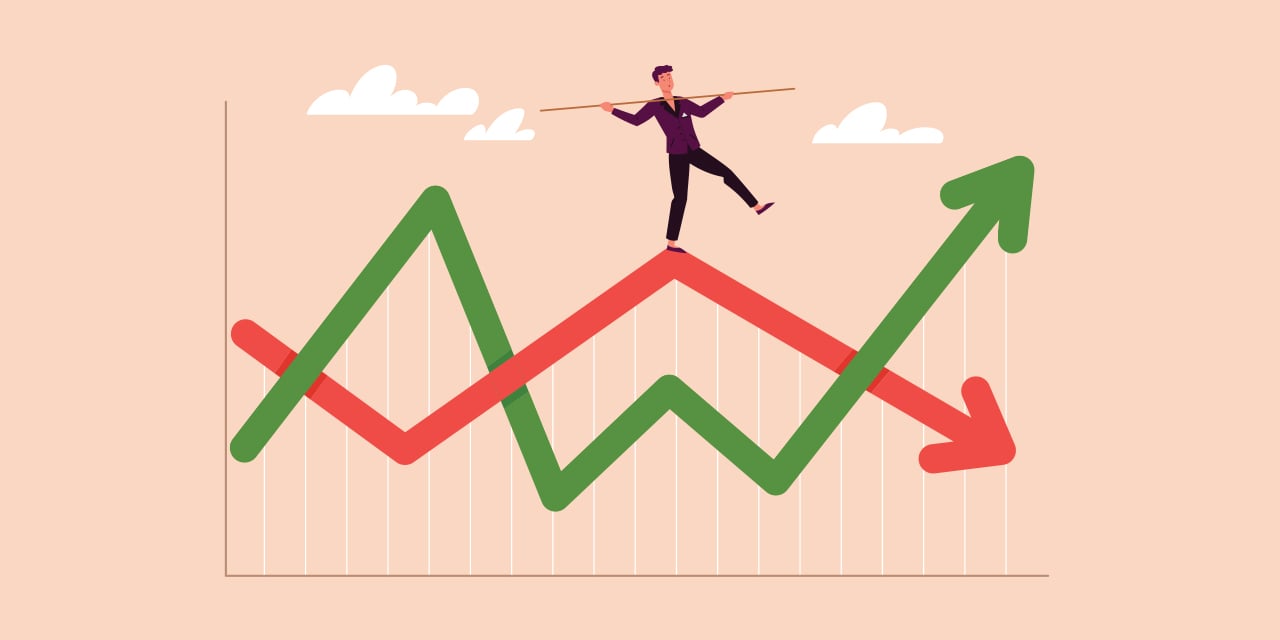
What the 1970s Can Teach Us About Inflation
 Ross Mayfield, CFA® Baird Investment Strategy Analyst
Ross Mayfield, CFA® Baird Investment Strategy Analyst
In June 2022, inflation reached 9.1%, as measured by the Consumer Price Index – its highest level since the waning of the Great Inflation in the 1970s, a decade characterized by political volatility, stagnant growth and skyrocketing prices. While you can’t make a truly apples-to-apples comparison between what we experienced more than 40 years ago and what we’re experiencing now, there are lessons from that era that can offer insight into inflation from today. Baird Investment Strategy Analyst Ross Mayfield takes us on a trip through time to explore lessons the 1970s can teach us about inflation.
Many of the Causes Are the Same
While there are differences to be sure between the economic backdrops from the 1970s and today, the two periods in time have some significant similarities, especially when it comes to market policy:
- Heavy doses of government spending. In the 1960s, President Lyndon B. Johnson ramped up spending on both the Vietnam War and Great Society programs. Rather than choosing a side in the age-old Guns vs. Butter debate, Johnson opted for both. Today, the source of spending is well-known – in response to the Covid-19 pandemic and lockdowns, the U.S. government (and other governments around the world) spent trillions to keep the economy out of a depression.
- The actions of the Federal Reserve. In the late 1960s, partially as a lingering hangover from the Great Depression, the Fed viewed unemployment as a larger threat than inflation. As the Federal Reserve Bank of Atlanta concluded, “it was generally believed that permanently lower rates of unemployment could be ‘bought’ with modestly higher rates of inflation.” This would ultimately prove a false bargain. Today’s Fed put an emphasis on the labor market in the early days of the pandemic, choosing to focus on the historic levels of unemployment over the nascent threat of inflation. In the end, both eras saw their easy monetary policy accomplish near-record levels of unemployment – but the cost was elevated inflation.
- Geopolitical shocks that impacted commodity prices – specifically crude oil. In the 1970s, the 1973 Arab oil embargo and 1979 Iranian revolution sent the price of a barrel of crude oil skyrocketing by the end of the decade. Gas shortages and miles-long lines at the pump became commonplace. Today, Russia’s invasion of Ukraine has hamstrung global supply and sent the price of oil to 14-year highs (an entirely different world from just April 2020, when a barrel of oil briefly traded to -$37). Geopolitical shocks greatly complicate domestic policymaking because there is no easy way for politicians to control supply-side issues – the Fed cannot pump more oil nor sail more tankers.
Have We Learned Anything?
It’s safe to say the U.S. today is taking a different approach to managing inflation compared to what we did 40+ years ago. First and foremost, the political pressure on the Fed today stems from a need to control inflation rather than a desire to run the economy hot. As former Fed Chair Ben Bernanke recently wrote, “back then, any inclination by the Federal Reserve to fight inflation by raising interest rates, which could also slow the economy and raise unemployment, met stiff political resistance.” Today, the politics is much different, with an administration who would like nothing more than to see inflation reigned in. The end of the gold standard also added uncertainty and likely contributed to the ill-advised policy prescription of the time.
The Fed’s recognition of the scope of the problem today is a critical asset. Though the current Fed may find itself behind the curve, it was (by some accounts) nearly a decade before policymakers in the 1970s truly committed to fighting inflation, which topped out at 14.6% in 1980. In addition to the damaging economic effects of such a long period of heightened prices, there is also an important psychological component – that is, the longer inflation lingers, the more it becomes entrenched in consumer expectations and reinforces an inflationary spiral. As Strategas, a Baird Company, CEO Jason Trennert wrote, “if there is one thing that stands out … it is how difficult it is to bring inflation under control once expectations for higher prices become entrenched. … It seems that trust, once lost, takes a long time to restore.” Today, the Fed and other global central banks are already on the case, raising rates expeditiously despite slowing economic growth and a bear market in stocks.
We have long been believers in the power of historical comparison – as the saying goes, history might not repeat, but it often rhymes. Though the 1970s were a trying time, our markets and economy ultimately persevered. The Federal Reserve tamed inflation in the early 1980s and kicked off one of the great eras of economic and market prosperity in history. While there’s no saying for sure what’s on the other side of the current inflationary period, it’s a good reminder that forming a financial plan and sticking to it have never been more critical. Your Baird Financial Advisor can help you make sure you’re properly positioned no matter what the markets, and inflation, have in store.
This information has been developed by a member of Baird Wealth Solutions Group, a team of wealth management specialists who provide support to Baird Financial Advisor teams. The information offered is provided to you for informational purposes only. Robert W. Baird & Co. Incorporated is not a legal or tax services provider and you are strongly encouraged to seek the advice of the appropriate professional advisors before taking any action. The information reflected on this page are Baird expert opinions today and are subject to change. The information provided here has not taken into consideration the investment goals or needs of any specific investor and investors should not make any investment decisions based solely on this information. Past performance is not a guarantee of future results. All investments have some level of risk, and investors have different time horizons, goals and risk tolerances, so speak to your Baird Financial Advisor before taking action.


